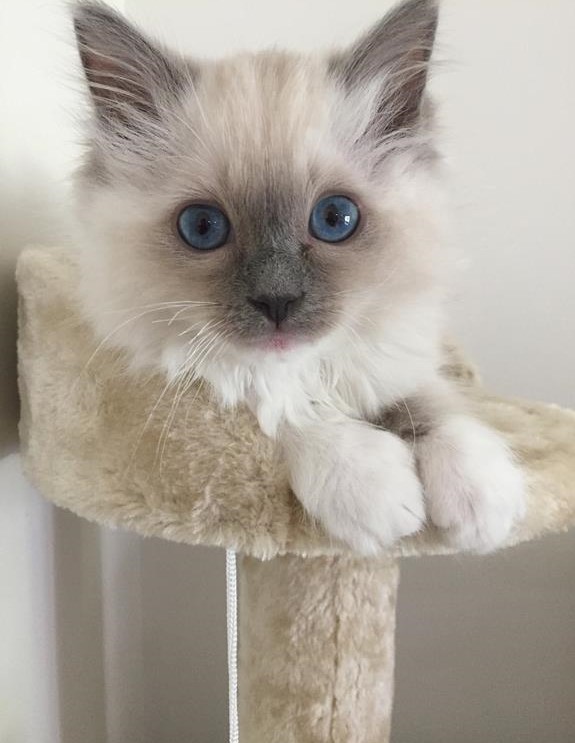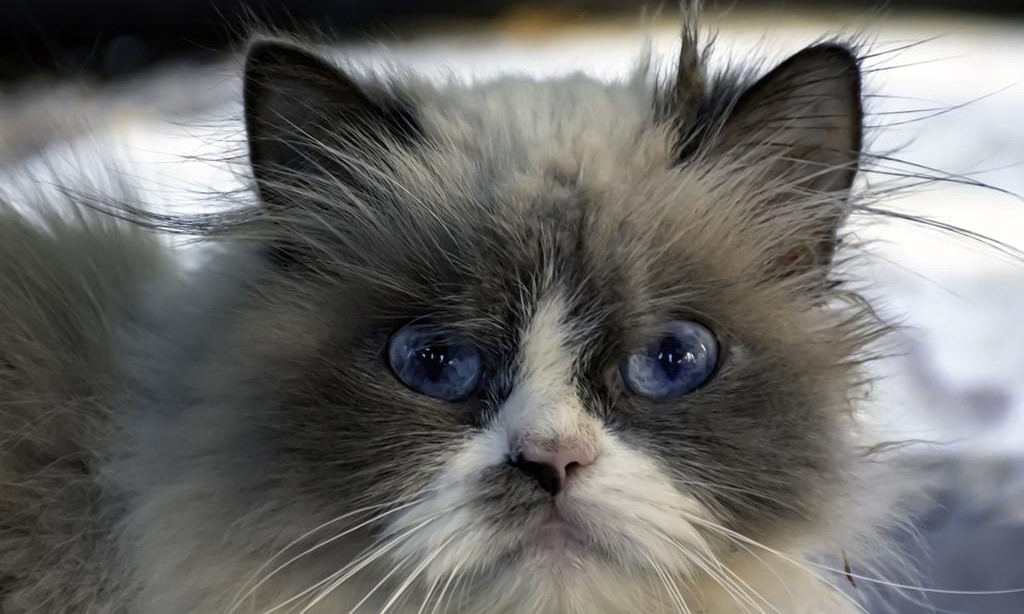Ragdoll cats, known for their gentle nature and striking appearance, can occasionally develop bad breath, also known as halitosis. Foul-smelling breath in cats can be indicative of various underlying issues, and addressing it promptly is crucial for maintaining your Ragdoll’s overall health and well-being. In this article, we will explore potential causes of bad breath in Ragdoll cats and provide a comprehensive guide on what to do.
Possible Causes of Bad Breath in Ragdoll Cats:
- Dental Issues: Dental problems, such as gum disease, tooth decay, or infections, are common culprits for bad breath in cats. Plaque and tartar buildup can contribute to these issues.
- Digestive Problems: Issues with the digestive system, such as gastrointestinal disorders or dietary issues, can lead to malodorous breath in cats.
- Oral Infections: Infections in the mouth, including those affecting the gums or throat, can result in bad breath.
- Kidney Disease: Chronic kidney disease can sometimes cause unpleasant breath due to the accumulation of toxins in the body.
- Diabetes: Cats with diabetes may exhibit sweet-smelling breath as a result of ketones produced during the breakdown of fats.
Things to Do if Your Ragdoll Cat Has Bad Breath:
- Veterinary Check-up: Schedule a veterinary check-up as soon as you notice bad breath in your Ragdoll cat. A thorough examination by a veterinarian will help identify the underlying cause and determine the appropriate course of action.
- Dental Care: Establish a regular dental care routine for your Ragdoll. Brush their teeth using a cat-friendly toothbrush and toothpaste. Introduce dental treats or toys designed to promote oral health.
- Professional Dental Cleaning: If your cat’s bad breath is associated with dental issues, your veterinarian may recommend professional dental cleaning under anesthesia to address more significant problems.
- Dietary Assessment: Ensure your Ragdoll cat is on a balanced and nutritious diet. Dietary issues can contribute to bad breath, and your veterinarian can provide guidance on suitable food choices.
- Hydration: Ensure your cat has access to fresh water at all times. Proper hydration can contribute to better breath and overall health.
- Monitor for Other Symptoms: Pay attention to any additional symptoms your cat may exhibit, such as changes in eating habits, weight loss, or lethargy. These could be indicators of underlying health issues that need attention.
- Avoid Human Dental Products: Only use dental products specifically formulated for cats. Human toothpaste can be toxic to cats, so it’s crucial to choose cat-friendly options.
- Regular Veterinary Check-ups: Schedule regular veterinary check-ups to monitor your Ragdoll cat’s health and catch potential issues early on.

Why does my Ragdoll cat have bad breath?
Bad breath in Ragdoll cats can be caused by various factors, including dental issues such as gum disease or tooth decay, digestive problems, oral infections, kidney disease, or diabetes. Identifying the specific cause requires a veterinary examination.
Can I brush my Ragdoll cat’s teeth at home to improve bad breath?
Yes, you can brush your Ragdoll cat’s teeth at home to help improve bad breath and promote better oral hygiene. Regular dental care is an essential part of maintaining your cat’s overall health, and brushing their teeth can significantly contribute to preventing dental issues such as plaque and tartar buildup.
Here’s a guide on how to brush your Ragdoll cat’s teeth at home:
- Introduce Gradually: Start by getting your cat accustomed to the idea of having their teeth brushed. Begin by gently touching their mouth and teeth for short periods. Use positive reinforcement, such as treats or praise, to create a positive association.
- Choose the Right Tools: Use a cat-friendly toothbrush and toothpaste. Cat toothbrushes are small and soft, designed specifically for a cat’s mouth. Cat toothpaste comes in flavors that appeal to cats and is safe for them to swallow.
- Establish a Routine: Aim for a consistent brushing routine. Start with short sessions and gradually increase the duration as your cat becomes more comfortable. Brushing your cat’s teeth a few times a week is generally sufficient.
- Positioning: Find a comfortable and quiet space for the brushing session. Gently hold your cat and lift their lip to expose the teeth. Use a calm and reassuring voice throughout the process.
- Brushing Technique: Hold the toothbrush at a 45-degree angle to the teeth and use gentle, circular motions. Focus on the outer surfaces of the teeth, where plaque tends to accumulate. Pay extra attention to the back molars.
- Be Patient: If your cat is resistant initially, be patient and persistent. Gradually increasing the positive reinforcement and associating the experience with treats can make the process more enjoyable for your cat.
- Monitor for Signs of Discomfort: Watch for signs of discomfort or stress during the brushing process. If your cat seems distressed, consider consulting with your veterinarian for alternative dental care options.
Regular dental care, including at-home tooth brushing, is crucial for preventing dental issues and maintaining your Ragdoll cat’s oral health. If you have concerns about your cat’s bad breath or if you’re unsure about the best approach for dental care, it’s advisable to consult with your veterinarian for guidance tailored to your cat’s specific needs.
Should I be concerned if my Ragdoll cat’s breath suddenly becomes foul-smelling?
Yes, a sudden onset of bad breath in your Ragdoll cat should be a cause for concern. It could indicate an underlying health issue that requires prompt attention. Schedule a veterinary check-up to determine the cause and initiate appropriate treatment.
How often should I take my Ragdoll cat to the vet for dental check-ups?
Regular veterinary check-ups are important for monitoring your Ragdoll cat’s dental health. Your veterinarian can recommend a schedule based on your cat’s individual needs. In general, annual check-ups are advisable, but more frequent visits may be necessary if dental issues or concerns arise.
Conclusion:
Addressing bad breath in Ragdoll cats involves a multi-faceted approach, starting with a veterinary examination to determine the underlying cause. Establishing a proactive dental care routine, maintaining a nutritious diet, and monitoring your cat’s overall health are essential components of keeping your Ragdoll’s breath fresh. By taking these steps, you can ensure that your Ragdoll cat enjoys optimal oral health and a happy, odor-free life.



